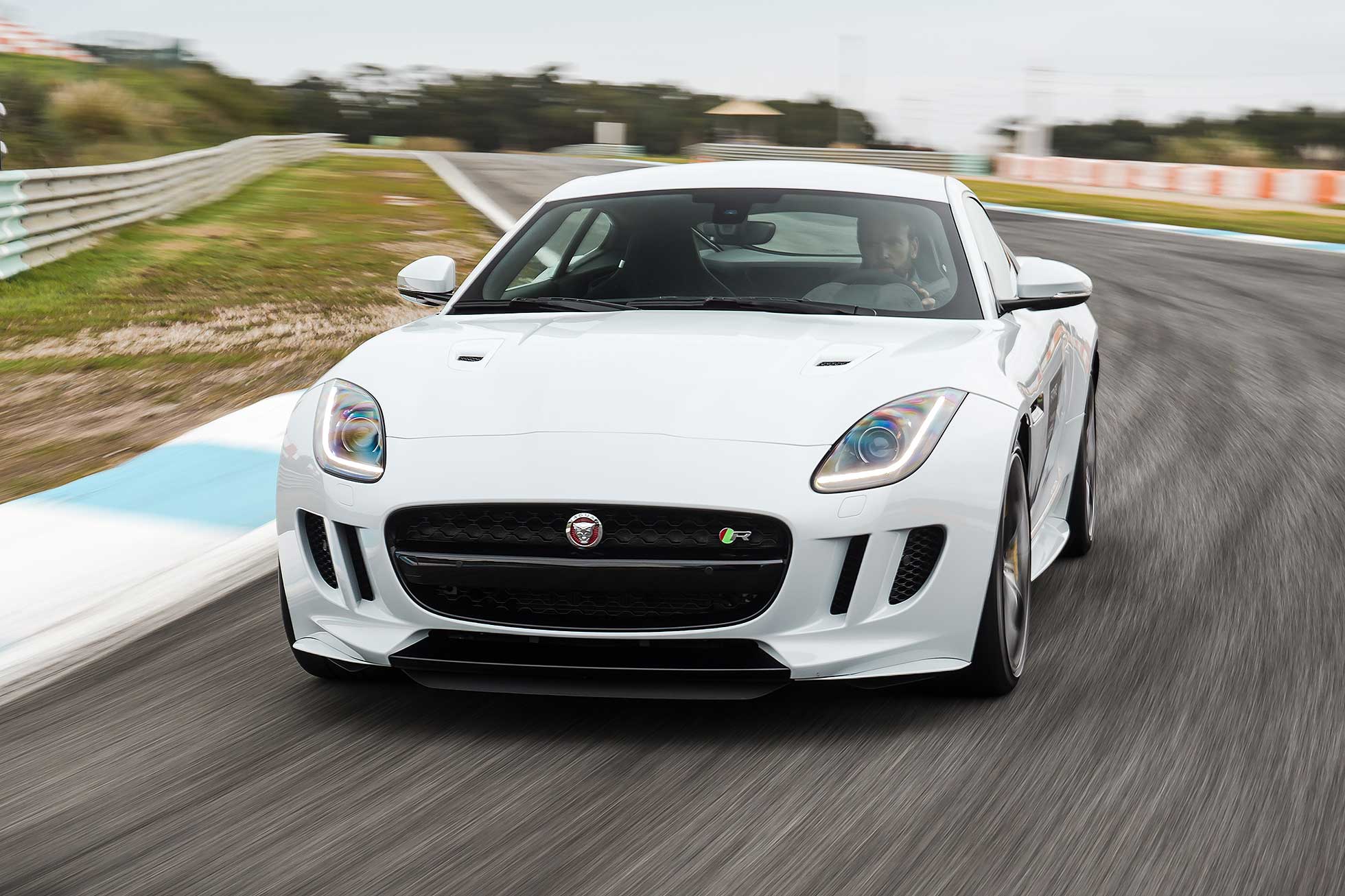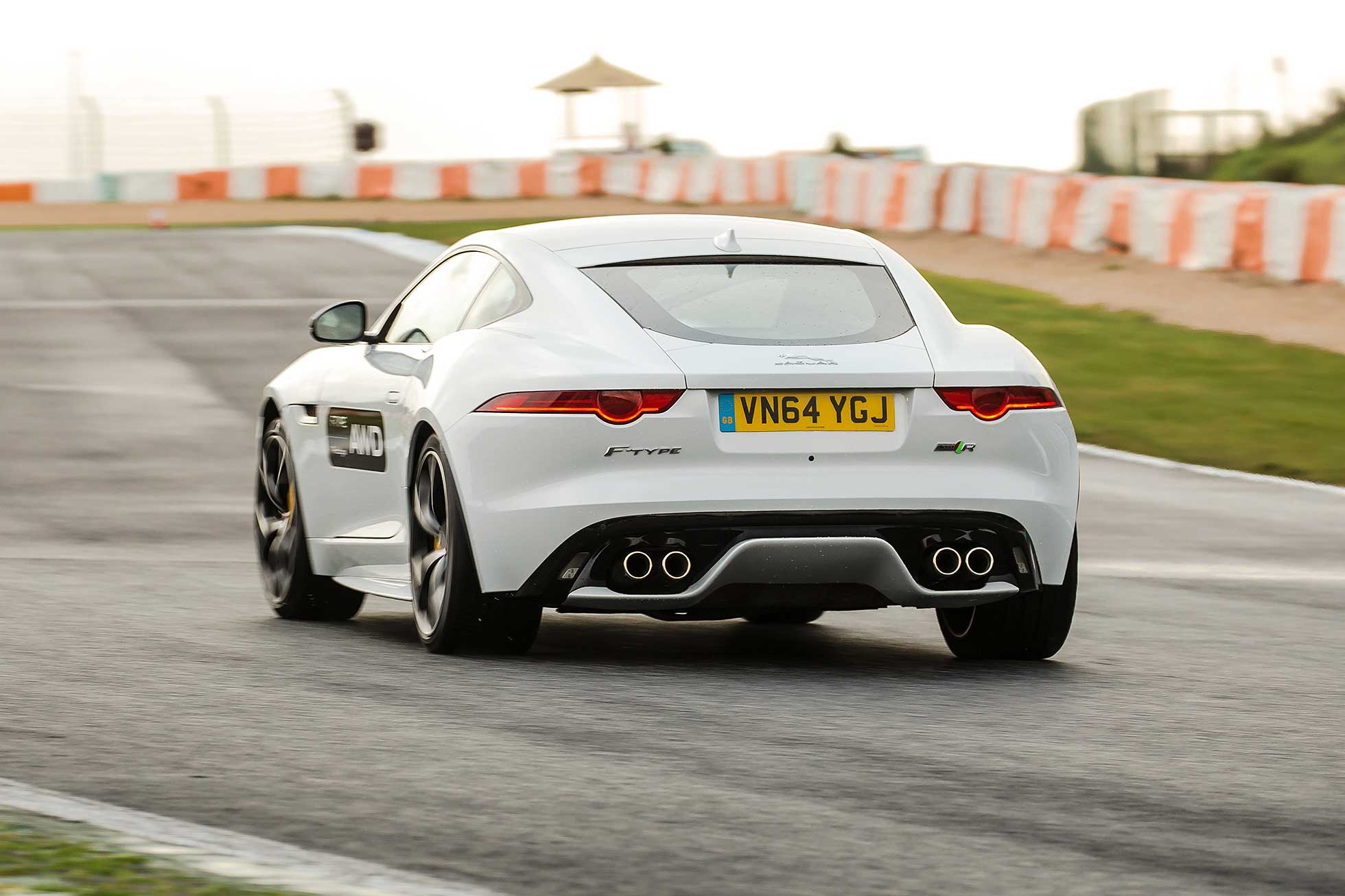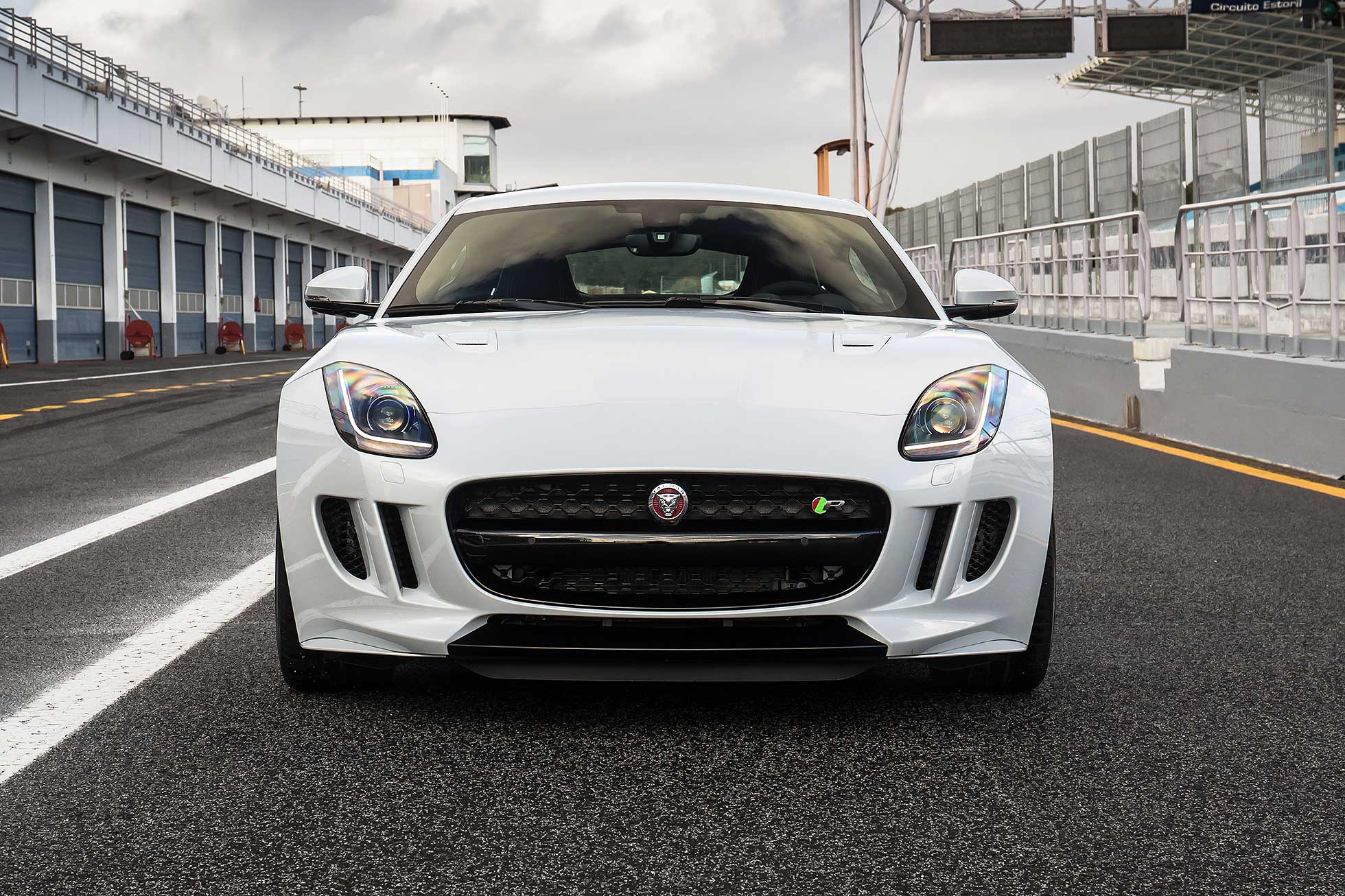
Jaguar enhances the F-Type for 2015: AWD is deservedly the star draw
Richard Aucock | February 2015
Jaguar’s F-Type has been a hit. The Convertible and more recent Coupe, in two versions of supercharged V6 and two flavours of supercharged V8, have been well received by the press and are selling well in showrooms. It’s a car Jaguar’s proud of – and it’s one the firm wants to develop further.
So, for 2015, we have a series of updates and additions to the range. In a nod to the US market – still the world’s biggest one for sportscars like this – they come under the banner 16MY, and will roll out in dealer showrooms in the spring. And what’s the biggest news of all? The arrival of four-wheel drive to the range.
Just as Porsche offers rear-wheel drive and four-wheel drive 911s, so too can Jaguar now offer an AWD F-Type to complement the existing rear-drive cars. Offered in 380hp V6 S and 550hp V8 R guise, it’s a system that uses Jaguar-bespoke tech called Intelligent Driveline Dynamics, or IDD.
Basically, this means 100 per cent of drive is normally sent rearwards: it’s an on-demand four-wheel drive system, rather than a permanent setup. It actively ‘senses’ potential loss of grip, rather than reacts to actual wheel slip, blending drive to the front wheels in a permanently variable split. Jaguar is enormously proud of the system and says, even when it is operating, the F-Type still ‘feels’ rear-driven.
Incidentally, the launch 510hp V8 S Convertible is no more: it’s been upgraded to 550hp R spec, lifting the price tag accordingly to a heady £97,135 in AWD guise. The £100,000 F-Type is getting near…
There are other changes for 16MY cars, which go on sale in spring 2015: a new InControl sat nav, improved dials with a smarter display between them, Sport Design Pack body addenda and even a carbon fibre roof option for the Coupe (it weighs just 4.25kg and lowers the car’s centre of gravity. And, with its exposed weave, looks really cool).
Oh, and 16MY F-Types also get electric power steering. Jaguar made a big deal at launch about using a ‘purist’ hydraulic setup because EPAS wasn’t good enough. Now, a few years on, it is, and it says the F-Type’s steering has been improved by its addition.
A lot of changes, then – and the only visual cues to the new AWD models are a deeper bonnet bulge and further-apart, more forward-set bonnet vents at the front, and a tiny ‘AWD’ badge on the rear. How do they reveal themselves on the road?

What’s the Jaguar F-Type AWD like to drive?
Jaguar first let us drive the F-Type AWD in 380hp V6 S guise, on a soaking wet slalom out the back of Portugal’s Estoril racetrack. This potentially could have been pretty hairy: the auto-only Coupe can hit 62mph from rest in 4.9 seconds and we knew the rear-drive model would have either been leaning heavily on the ESP electronics or totally reliant on our skill with the opposite-lock.
We knew AWD would be safer but wondered about the loss of sensitivity, the extra understeer, the more neutral, less engaging feel. We needn’t have worried. Even in this slalom, the F-Type still felt rear-led, with the front wheels simply offering extra traction to balance things out. It was more incisive, more balanced, maybe even more fun and certainly a whole lot faster. The way it exploded foursquare out of corners was very exciting.
And so it proved on the racetrack. There, we drove it in full-fat 550hp V8 R Coupe spec, and during our first fumbled laps trying to learn which way the twisting circuit went, all the cues were of a rear-wheel drive car. When we actually found the apex, it turned in crisply even if we were carrying too much speed (as we frequently were); accelerating hard out of corners, the balance was neutral-to-rear-led, with more sense the rear end wants to ease wide rather than the front. Perfect.
Once we found our flow, the F-Type AWD continued to dazzle. Jaguar’s intelligent drive system seems completely seamless, allowing you to push on hard with complete confidence. It’s even more agile than the rear-drive model, considerably more balanced during sporty driving and, basically, feels cleaner and more efficient.
There’s little sense of electronic interference and none of the slight wooliness you get with, say, a four-wheel drive Porsche 911 compared to the regular rear-drive machine. And if you fiddle with the leniency of the stability control, you can still have the rear drifting out of corners, but this time it’s an almost ridiculously natural thing to do. 550hp cars shouldn’t be quite this easy to feel like a hero in, surely…
Torque vectoring further mitigates any sense of softness or ‘push’ on the front end. It juggles individual brakes to tuck the front end into corners, making it seem even sharper and further quelling any risk of understeer. It’s always been fitted to the V8 R Coupe; now, it’s standard on V6 S models, and optional on the base V6.
And the steering? We barely even thought about it. The ‘Jaguar’ detail and tiny-input sensitivity is still there, and it’s certainly not obviously ‘electric’. Stiffer front springs for the AWD, plus stiffer control arm bushes, further help enhance steering precision and on-centre feel. We’ll have to wait for the unique challenges of UK roads to make a final call but first impressions suggest Jaguar was right to go electric.

Is the V8 R AWD the ultimate Jaguar F-Type?
Jaguar is committed to continuously developing the F-Type. These latest changes were planned from the start and are part of its intention to make sure interest in the range continues. AWD is a key addition and will particularly enhance its appeal in North America – although if Porsche 911 trends are anything to go by, all markets are likely to steer towards it.
The high-tech four-wheel drive hardware really enhances the car. It broadens the capabilities of the V8 R and, thanks to its greater bandwidth, is likely to please enthusiasts all the more. The V8 F-Type has never been short of power, and the 5.0-litre supercharged motor’s torque means it’s devilishly easy to access: the challenge up to now has been finding sufficient traction to use it all. Now, with AWD, it can be.
Indeed, AWD traction means the UK-benchmark 0-60mph dash now starts with a ‘3’ for the first time; 3.9 seconds makes it not far shy of the XJ220 supercar (although the 0-62mph time is a slightly slower 4.1 seconds, it’s still faster than the rear-drive car).
Of course, while the F-Type R AWD Coupe is now the ultimate Jaguar sportscar, we wouldn’t expect it to remain this way. The chassis now so capable of handling even more firepower, Jaguar now has a green light to make even hotter versions, surely. F-Type R-S, anyone?
Other changes for the 16MY can be appreciated by all. The upgraded sat nav system is far more intuitive, and InControl tech brings apps into the F-Type for the first time. EPAS makes it a bit more fuel efficient too: the base 340hp V6 automatics become the first Jaguar sports cars to dip under the 200g/km CO2 mark.

Verdict: 2015 Jaguar F-Type AWD
The F-Type AWD is the perfect development for Jaguar’s beefy sports car. It’s never been short of power, but could be a bit intimidating for some, particularly in full-fat 550hp R guise. Spreading drive between four tyres rather than two when necessary makes it more incisive, more friendly and, much of the time, that bit more satisfying to drive quickly.
Crucially, Jaguar has retained the purity of the rear-drive car – indeed, as it’s now possible to use so much more of the engine’s drive, it’s perhaps even the purer-feeling car on twisting roads. That’s a measure of how able Jaguar’s new on-demand AWD system is.
With other enhancements for 2015 including a long-overdue sat nav upgrade, seemingly-impressive new electric power steering and high-tech torque vectoring for all versions, the F-Type is only likely to further its growing command of the global sports car sector.
Specifications: 2015 Jaguar F-Type V8 R AWD Coupe
Engine: 5.0-litre supercharged V8
Gearbox: eight-speed automatic, four-wheel drive
Price: £91,650 (AWD range starts from £66,900 – V6 S Coupe)
Power: 550hp
Torque: 502lb ft
0-62mph: 4.1 seconds
Top speed: 186mph
MPG: 25.0mpg
CO2: 269g/km